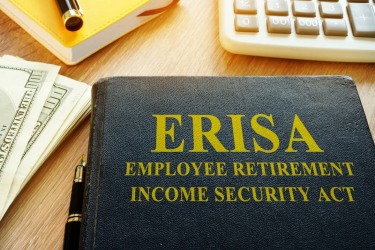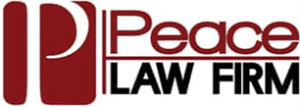ERISA Fines: Guide to ERISA Fines & Punishments

The Employee Retirement Income Security Act of 1974 (ERISA) establishes conduct standards, responsibility, and fiduciary obligations for employee benefit plan administrators.
When an employer or administrator fails to meet ERISA’s minimum requirements, the law authorizes lawsuits in federal court, monetary remedies, and sanctions.
The Employee Benefits Security Administration (EBSA) is responsible for enforcing ERISA. In 2021, EBSA’s efforts recovered over $2.4 billion for plans, participants, and beneficiaries.
EBSA reported that 69% of civil investigations closed in 2021 resulted in financial results for plans. The legislature sets ERISA fines at a specific or maximum dollar amount and adjusts for inflation annually.
To avoid an ERISA violation and fines, employers and plan administrators must
- Follow the terms of the plan,
- Give notices to employees,
- Report information to the government,
- Follow proper claim denial procedures, and
- Act as a fiduciary to plan beneficiaries.
If your employer or plan administrator has failed to meet their duties under ERISA, you may be able to recover fines for ERISA violations.
This page will guide you through the process for ERISA audits and the possibilities for civil penalties and criminal consequences. If you have specific questions, your ERISA attorney will explain your options for recovery under the law.
ERISA Audits, Fines, and Penalties
The EBSA promotes policies that improve health benefits, encourage retirement savings, and safeguard employer-sponsored benefits.
EBSA’s enforcement program incorporates overlapping and related goals, including:
- Effective targeting and data analysis;
- Prompt detection and pursuit of violations;
- Successful pursuit of monetary recoveries;
- Non-monetary consequences that encourage ERISA conformance; and
- Aggressive and quick pursuit of member tips and grievances.
The EBSA regularly conducts audits to investigate benefit plans and confirm compliance. EBSA might perform an audit randomly or after reviewing DOL Form 5500, other government reports, SPDs, or employee complaints.
When EBSA finds a violation, it expects plan administrators to take corrective action. EBSA encourages voluntary corrective action and tries to avoid civil lawsuits. If EBSA cannot resolve the case, it will refer it to the Department of Labor (DOL) to initiate litigation. Since 2010, EBSA has referred less than 10% of investigations for civil litigation.
Civil Violations
A plan participant may bring a lawsuit for an ERISA violation after exhausting administrative remedies. EBSA will investigate the claim and issue penalties depending on the violation's circumstances.
EBSA will consider:
- The nature of the violation, including the withheld documents’ importance, the length of the delay, and the number of requests made;
- The harm caused by the violation; and
- Whether the violation was willful or with bad intent.
Remedies range from fines, payments to plan participants, and ordered changes to the company's practices and procedures. In addition to paying fines or submitting to sanctions, plan administrators might need to restore personal losses and plan funds, reprocess claims, or shift investment returns.
Beyond monetary sanctions, EBSA may also issue non-monetary penalties. Common corrections include removing fiduciaries, barring individuals from acting as fiduciaries, appointing independent fiduciaries, and reforming plan procedures.
Voluntary ERISA Compliance Corrections
EBSA’s goal is to avoid litigation and encourage compliance. Thus, DOL offers two voluntary compliance programs. The Delinquent Filer Voluntary Compliance Program (DFVCP) allows plan administrators to avoid costly penalties if they are late filing Form 5500, which reports the plan’s status to DOL.
If the plan administrator discovers a violation in their plan, the Voluntary Fiduciary Correction Program (VFCP) allows them to issue corrections. In 2021, EBSA received 1,201 applications for VFCP that documented $34 million in restored payments to plans.
Criminal Violations
Congress created ERISA to protect plan beneficiaries. However, in the case of criminal misconduct, ERISA allows for sanctions and imprisonment. EBSA typically finds criminal violations at the administrative or executive level and decides the appropriate course of action by the gravity of each case.
In addition to investigating embezzlement, kickbacks, and false statements under Title 18 of the U.S. Criminal Code, ERISA contains criminal provisions, including:
- Section 411, Prohibition Against Certain Persons Holding Certain Positions—prohibits persons with felonies from acting as a plan administrator;
- Section 501, Willful Violation of Title I, Part 1—sets penalties for violations involving reporting and disclosure;
- Section 511, Coercive Interference—prohibits fraud, force, violence, or threat of the use of force or violence to interfere with a plan member’s rights; and
- Section 519, Prohibition on False Statements and Representations—prohibits false statements in connection with the marketing or sale of Multiple Employer Welfare Arrangements (MEWA).
When EBSA finds a criminal violation, it refers criminal cases to the United States Attorney’s Office or state and local authorities for prosecution.
ERISA Fine Example
ERISA benefit plans cover about 141 million workers and beneficiaries and include more than $7.6 trillion in assets. Thus, everyone should understand ERISA compliance and fines, even employees.
Understanding your rights is the first step in enforcing ERISA’s protection. To illustrate the depth of the employee’s power under ERISA, here are two important ERISA cases referred to DOL and their results.
Acosta v. William Delaney (D.R.I.)
William J. Delaney allegedly paid himself the entire forfeiture account of the Equity Concepts, Inc. 401(k) and Profit Sharing Plan (which he was terminating).
The plan did not allow Delaney to use the forfeiture account for such purposes. The case settled, requiring Delaney to return the payment of $21,695, distribute the funds, and terminate the pension plan.
Scalia v. Florida Bankers Health Consortium, Inc. (M.D. Fla.)
The fiduciaries of the FBHC welfare benefit plan failed to monitor the fees the plan paid, resulting in excessive fees and prohibited transactions.
After an out-of-court settlement, the fiduciaries agreed to pay $40,000 to the plan, undergo four hours of ERISA education, and implement operational changes to ensure compliance with ERISA. Additionally, DOL will review the plan’s monthly financial reports, and the Florida Office of Insurance Regulation will monitor the plan.
How Can The Peace Law Firm Help?
When you’re dealing with misconduct surrounding your ERISA employee benefits plan, you need an experienced ERISA attorney. At the Peace Law Firm, we’ve helped many employees exercise their rights and impose ERISA fines.
Contact us today for a free consultation, and our attorneys will provide personalized guidance for the best path toward recovery.
